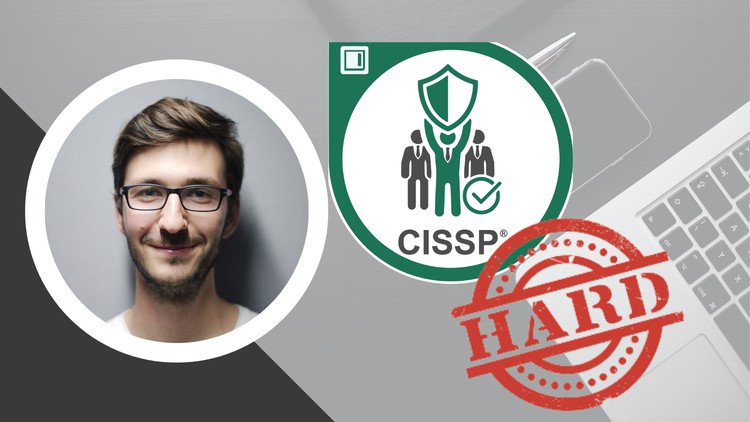
06 HARD PRACTICES | Detail explanation on every question | Enroll if you need to be more confident with the real test
What you will learn
Security and Risk Management
Asset Security
Security Architecture and Engineering
Communication and Network Security
Identity and Access Management (IAM)
Software Development Security
Practice with 06 HARD practice test – 250 Questions each to be confident with the real test format
Explanation for every question
Support from Instructor
Description
ABOUT THIS PRACTICE TEST SET
This mock HARD MODE exam for Certified Info Systems Security Professional (CISSP) is a practice exam designed to help candidates prepare for the actual certification exam. A mock exam consists of questions and answers that are similar in style, format, and higher difficulty level to those found in the real certification exam (250 questions in 6 hours in real test. The passing score is 700/1000).
IMPORTANT: These questions are up-to-date and relevant to the actual exam.
Taking a mock exam can be helpful in several ways:
- Familiarization: A mock exam can help candidates become familiar with the format and types of questions found in the real exam. This can help reduce anxiety and increase confidence when taking the actual exam.
- Assessment: A mock exam can help candidates assess their knowledge and identify areas where they need to improve. This can help them focus their study efforts on areas that are most important for passing the actual exam.
- Time Management: A mock exam can help candidates practice time management and pacing themselves during the exam. This can help ensure that they have enough time to answer all of the questions on the actual exam.
HOW TO PRACTICE EFFECTIVE?
- Simulate the exam environment: Try to simulate the exam environment as closely as possible. Time yourself, and avoid distractions, so you can focus on the exam questions.
- Review the results: After taking the practice exam, review the results to identify the areas where you need to improve. Focus your study efforts on these areas before taking another practice exam.
- Repeat the process: Repeat the process of taking mock exams, reviewing the results, and focusing your study efforts on areas where you need to improve. This will help you build confidence and prepare you for the actual certification exam.
- Communicate with instructor frequently: During the practice, don’t hesitate to communicate with me if you have any queries. I’m more than happy to answer to help you understand clearly about the question and concept.
************* INTRODUCE ABOUT CISSP *************
CISSP stands for Certified Information Systems Security Professional. It is a globally recognized certification in the field of information security. The certification is offered by the International Information System Security Certification Consortium, also known as (ISC)².
The learning objectives of the CISSP certification include:
- Security and Risk Management: The objective of this domain is to provide an understanding of the concepts, principles, and structures that underpin the security and risk management function, including the development of security policies, procedures, standards, and guidelines.
- Asset Security: This domain aims to teach the principles of protecting information and assets throughout their lifecycle, including physical, digital, and intellectual property.
- Security Architecture and Engineering: This domain covers the principles and concepts of designing, developing, implementing, and maintaining secure architectures and systems.
- Communication and Network Security: This domain aims to provide an understanding of the design, implementation, and management of secure communication and network architectures.
- Identity and Access Management (IAM): This domain covers the principles, processes, and technologies used to manage user access and authentication to enterprise resources.
- Security Assessment and Testing: This domain aims to provide an understanding of the principles, processes, and technologies used to assess and test the security of information systems.
- Security Operations: This domain covers the principles, processes, and technologies used to maintain the security and operational continuity of information systems.
- Software Development Security: This domain aims to provide an understanding of the principles, processes, and technologies used to build secure software.
Content